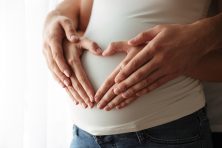IVF Twins – The Chances of Twins With IVF Treatment

If you are undergoing IVF and hoping to have a baby, you might wonder what are the chances of conceiving twins through this process. IVF is known to potentially increase the chances of a twin pregnancy, especially when two embryos are transferred. At the same time, it is important to understand the risk of multiple pregnancy and how it can affect both the mother and the babies. Below, we’ll explore how IVF and embryo selection play a crucial role in the chances of twins with fertility treatment and how you can make an informed decision.
Understanding IVF Twins
Having twins with IVF can be an exciting prospect for some patients, but it also comes with additional considerations. It is essential to learn about the number of embryos transferred, the risk of complications, and the likelihood of a successful twin pregnancy before starting your IVF cycle.
What Are IVF Twins?
IVF twins typically occur when the embryo transfer involves more than one viable embryo, or when a single embryo splits into identical twins. In cases where two embryos implant successfully, you may end up with fraternal twins (also called dizygotic). On the other hand, identical twins (monozygotic) result from the embryo dividing into two.
-
Fraternal twins: Develop from two distinct embryos; genetically similar to siblings born at different times.
-
Identical twins: Occur if the embryo splits, leading to twins who share nearly the same genetic makeup.
While twin pregnancies can be a joyful outcome, keep in mind that the risk of multiple pregnancy is higher compared to singletons, which means there can be a higher risk of health issues for both the mother and the babies.
The Chances of Twins With IVF
When considering IVF treatment, many patients ask, “What are the chances of having twins?” The chances of twins with fertility treatment depend on several factors:
-
The number of embryos transferred: Transferring more than one embryo may increase the likelihood of twins. Meanwhile, a single embryo transfer can still occasionally result in identical twins, although this is less common.
-
Embryo quality and stage: Transferring higher-quality embryos at the blastocyst stage (day 5) can increase the chances of successful implantation, which in turn can lead to twin pregnancies if more than one embryo implants.
-
Maternal age: Patients over 35 may have a different strategy for embryo transfer based on egg quality and overall fertility health.
-
Underlying cause of infertility: Certain conditions or a history of multiple failed cycles might prompt the transfer of more than one embryo in an attempt to increase the chances of pregnancy.
In the UK, the multiple maternity rate for women aged 45 years and over has seen a significant reduction, decreasing from 115.5 per 1,000 in 2012 to 79.3 per 1,000 in 2018. This decline corresponds with the Human Fertilisation and Embryology Authority’s (HFEA) push to lower multiple birth rates by promoting single embryo transfer (eSET) and setting a national target of 10%. By 2018, this target was surpassed across all age groups, with only 8% of IVF births resulting in multiples. Additional factors influencing this decrease include advancements in IVF techniques—such as improved freezing, more comprehensive genetic testing, and transferring embryos at the blastocyst stage—all of which enhance single embryo viability and reduce the likelihood of twin pregnancies. Below you find a comparison between the twin birth rates from the UK and US:
| Country | Twin Birth Rate | Trend | Source |
| USA | 32.6 per 1,000 total births | – 4% decline between 2014 and 2018. Historically higher than UK. Twin rate peaked in early 2010s | CDC (Centers for Disease Control and Prevention) |
| UK | 15 per 1,000 women giving birth | Declining for third consecutive year. – 8% of IVF births resulted in multiple births in 2018 (per HFEA). Sharp decline among women 45+ since 2012 | ONS (Office for National Statistics). HFEA (Human Fertilisation & Embryology Authority) |
The Number of Embryos Transferred
Deciding how many embryos to transfer during IVF directly affects both pregnancy success rates and the risk of multiple births (Kamath et al., 2020). While placing two or more embryos in the uterus may boost the chance of pregnancy in a single cycle, it also raises the likelihood of twins or higher-order multiples. This can lead to increased complications for both mother and babies. Balancing these considerations is key when choosing how many embryos to transfer.
Why Does the Number of Embryos Matter?
Transferring embryos impacts not only overall pregnancy rates but also the probability of twins and the associated risks (e.g., preterm birth and intensive prenatal care). Research indicates that elective single embryo transfer (SET) often reduces the chances of multiple pregnancy while maintaining strong success rates over multiple cycles (Kamath et al., 2020). In contrast, transferring two or more embryos can yield higher success in one cycle but increases the chance of multiple gestations.
Single Embryo Transfer vs. Multiple Embryo Transfer
Patients with a good prognosis often opt for single embryo transfer because any unsuccessful attempt can be followed by transferring a frozen embryo. This strategy can achieve comparable success rates while lowering the risk of twins. On the other hand, multiple embryo transfer may increase the likelihood of twins or more, adding potential medical and logistical challenges. Ultimately, the decision should reflect the goal of a healthy pregnancy while considering personal preferences and medical advice.
Factors Affecting the Chances of Twins with IVF
Various aspects can influence the likelihood of twins, including maternal age, family history, embryo quality, IVF protocol, and past pregnancies. Understanding these factors helps tailor treatment to balance success rates with the risk of multiple pregnancies.
Maternal Age and Family History
Women over 30 may have a slightly higher chance to have twins, partly due to shifts in hormonal patterns that stimulate multiple eggs. In IVF, age can also affect egg quality and the number of embryos transferred; older patients sometimes opt for more than one embryo to boost the pregnancy rate. However, transferring multiple embryos can increase the chances of a twin pregnancy or even higher-order multiples.
Embryo Quality and IVF Protocol
If twins run in your family, especially fraternal twins, it may suggest a genetic predisposition toward releasing more than one egg. While this factor is more relevant in natural conception, some IVF and ovulation-stimulation medications may further increase the likelihood of hyperovulation, thereby raising the chances of multiple gestations.
Cause of Infertility and Previous Pregnancies
Certain infertility diagnoses—like polycystic ovary syndrome (PCOS) or other conditions leading to irregular ovulation—may influence the number of embryos developed in a given IVF cycle. Additionally, if you have been pregnant before or have had multiple IVF cycles, you and your fertility specialist may choose a different strategy for the embryo transfer. For instance, a patient who previously failed multiple cycles might lean toward transferring two embryos in one cycle to increase the chances of a successful pregnancy, though this approach can be more likely to have twins.
Becoming Pregnant with IVF Treatment
Ready to take the next step in your IVF journey? Our Ovoria team can help you understand your options, from selecting the right number of embryos to exploring donor egg IVF. Connect with us now to discuss a personalized plan in partnership with clinics across the UK—so you can start your family-building journey with confidence.
Frequently Asked Questions
Can the transfer of one embryo result in twins?
Yes—through monozygotic splitting, where a single embryo divides to form genetically identical twins. Although the rate is low, it can still occur in IVF cycles, influenced by factors like embryo quality and lab techniques.
What are the chances of twins with IVF with 1 embryo?
If you transfer one embryo, the overall chance of a twin pregnancy is relatively low—commonly around 1–2%—since it depends on the embryo undergoing monozygotic splitting.
What are the chances of twins with IVF with 2 embryos?
Transferring two embryos notably increases the twin rate compared to single embryo transfer. Depending on factors like embryo quality and maternal age, the chance of twins with a two-embryo transfer may be 20–25%, and in some clinics or specific circumstances, this rate can be even higher.
References
Kamath, M. S., Mascarenhas, M., Kirubakaran, R., & Bhattacharya, S. (2020). Number of embryos for transfer following in vitro fertilisation or intra‐cytoplasmic sperm injection. Cochrane Database of Systematic Reviews, 2020(8), Article CD003416. https://doi.org/10.1002/14651858.CD003416.pub5
Ismail, L., Mittal, M., & Kalu, E. (n.d.). IVF twins: buy one get one free? [Correspondence]. Women’s Health Department, Kingston Hospital NHS Trust.
Moise, J., Laor, A., Armon, Y., Gur, I., & Gale, R. (1998). The outcome of twin pregnancies after IVF. Human Reproduction, 13(6), 1702–1705. https://doi.org/10.1093/humrep/13.6.1702





